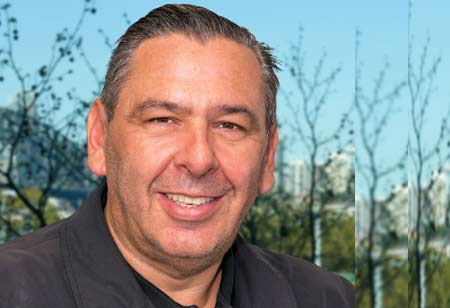Thank you for Subscribing to Construction Business Review Weekly Brief

Technology Transforming the Construction Space
With more than 30 years practical mega infrastructure projects’ construction and management experience, Emmanuel Clech has completed major projects in several countries worldwide. He has extensive international tunneling and major construction sites experience, which allows him to adapt quickly to new teams and changes in organization. His total commitment to safety and technical training and mentoring of his team starts from a high-level safety involvement at design and methodology stages.
Production and productivity are highly valued. Would you mind providing a little more detail as to why productivity is so crucial to you?
Making sure that people are aware of what we are doing at all times—rather than just what we are doing right now—is what productivity is all about to ensure that they are aware of the end goal. For instance, while constructing an underground motorway in Sydney, I realized that we are not only excavating a tunnel but also constructing a motorway. It implies that your aim should be the completion and the opening rather than the location of the excavation’s end. Based on that, there are values milestones, but I’m implementing them in accordance with our construction program, and all milestones are located throughout the course of the project, including testing and commissioning as well as excavation and civil work.
We monitor our progress towards our milestone targets on a daily, weekly, and monthly basis, and if we notice any possible deviation, we take proactive action rather than waiting until it’s too late to be reactive. This way, we can be sure that we meet all of our goals. Encourage individuals to continually keep mitigation in mind when things go astray, whenever they identify a potential delay risk, or even just to try to do better.
So that’s what I mean by productivity; it’s pushing the teams to work harder. To ensure that there won’t be any departure from the productivity plan, a specific time-based approach, daily, weekly, or monthly, depending on the significance of the milestone or how far you are from the milestone, must be followed.
How can you strike a balance between safety and reaching milestones?
We put a lot of emphasis on planning—methods—in brick construction. This is related to the plan and the schedule, which is related to the design. We mobilize a team of methods engineers from the project’s commencement as is customary. It is advantageous to be able to set working procedures along with design and a schedule program from the very beginning of a project. This makes it possible for us to identify the safest construction techniques while still incorporating the design and making any necessary adjustments. This gives us time to create any cutting-edge tools or machinery that we’ll need to complete the project safely and more effectively depending on our schedule. We define innovation in construction more broadly, emphasising cost effectiveness, program, safety, and other factors.
Also, our workers are typically not inexpensive, especially if you work in a developed country like Europe. It goes without saying that innovation, which is defined as mechanization or automatization which allows you to minimize exposure and population. Hence, it’s necessary to address both safe and the economical aspects of innovation in this manner.
How do you see the future of the construction safety industry in next few years?
There has already been a lot of innovation in tunneling, particularly in terms of TBM and that further innovation is currently being developed. That might change the game. For instance, if you use a TBM to excavate a cross passage, you frequently run into problems with rock stability. This is based on the generalization that TBMs are frequently used for this purpose. The development of cross passage machines, which allow for the safest excavation for cross passage and better quality to ensure that it is beneath and well connected to the existing tunnel, is currently receiving a lot of attention from all TBM vendors.
We monitor our progress towards our milestone targets on a daily, weekly, and monthly basis, and if we notice any possible deviation, we take proactive action rather than waiting until it’s too late to be reactive
To ensure that people are not exposed to risk, there is much work to be done in the traditional tunneling excavation. Hence, the interaction between moving machinery and pedestrians is always a concern and the primary factor in serious internal accidents. So, it is a good thing that pedestrian detecting technology is developing at a rapid pace. A new product will soon be available. We need to make sure that we are moving with a fully automated tunneling to eliminate people as much as possible from constricting, risky, frequently noisy, and dirty environment, which is fine. It’s not that we don’t want to hire people.
In the future, we should be able to survey the face without sending a surveyor down a tunnel thanks to data and new technology. We should be able to install guiding points without the assistance of a surveyor. All of our service personnel ought to be able to be taken out of the hazardous region.
What would be your single piece of advice to your peers in construction field?
I would advice to keep your end goal in mind. First off, don’t focus solely on rushing through task preparation. You must plan for the immediate future, but never lose sight of your long-term objectives. In order to secure the project in a timely manner, you frequently have to make judgments that could have an impact on the precursor activity, or the activity of tomorrow.








